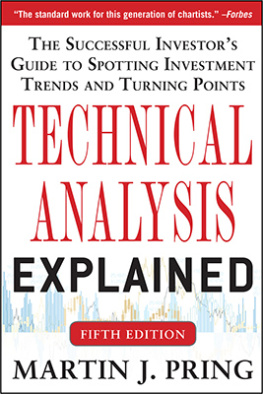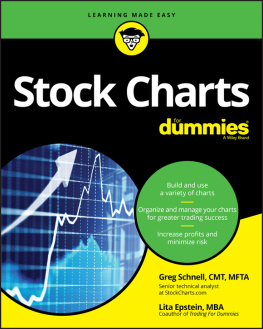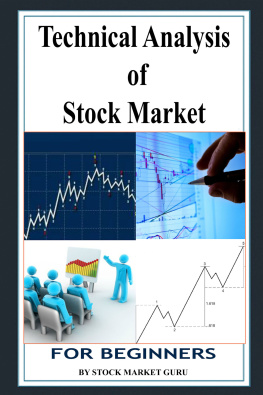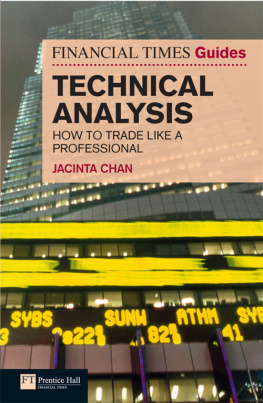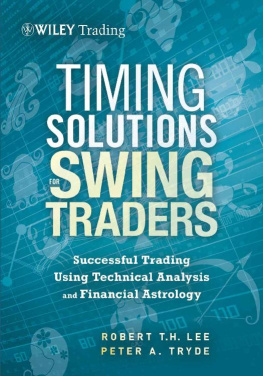If you enjoyed this book, discover your next great read with the following excerpt.
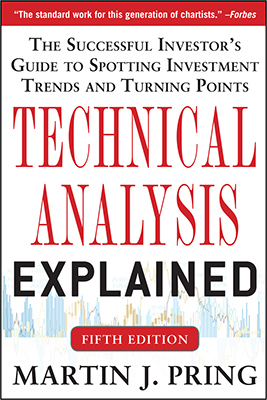
PREFACE
There is no reason why anyone cannot make a substantial amount of money in the financial markets, but there are many reasons why many people will not. As with most endeavors in life, the key to success is knowledge and action. This book has been written in an attempt to shed some light on the internal workings of the markets and to help expand the knowledge component, leaving the action to the patience, discipline, and objectivity of the individual investor.
The mid- to late-1980s saw the expansion of investment and trading opportunities to a global scale in terms of both the cash and the futures markets. In the 1990s, innovations in the communications industry enabled anyone to plot data on an intraday basis for relatively little cost. Today, numerous charting sites have sprung up on the Internet, so now virtually anyone has the ability to practice technical analysis. Indeed, the technology of teaching technical analysis has progressed since the first edition of this book in 1979. We pioneered the teaching of the subject in video format in the mid-1980s, but Ill venture to guess that technological progress and the acceptance of new media formats will mean that e-book sales of this edition will outstrip traditional sales of the physical book before it runs its course. Already, the written word is in competition with audiovisual presentations, such as my recently introduced online interactive technical analysis video course at pring.com; others are sure to follow!
As a consequence of the technological revolution, time horizons have been greatly shortened. I am not sure that this is a good thing because short-term trends experience more random noise than longer-term ones. This means that the technical indicators, while still the most effective tool, are not generally as successful when applied to longer-term trends. The fifth edition of Technical Analysis Explained has been expanded and totally revised to keep abreast of many of these changes, and to include some technical innovations and evolvement in my own thinking since the publication of the fourth edition. Nearly every chapter has been thoroughly reworked and expanded. In the interest of efficiency, some have been dropped and others substituted.
Considerable attention continues to be focused on the U.S. equity market, but many of the marketplace examples feature international stock indexes, currencies, commodities, and precious metals. Special chapters also feature technical analysis of the credit markets and global equities. Our focus has also been expanded to include analysis of the secular, or very long-term, trends of stocks, bonds, and commodities. In most cases, the marketplace examples have been updated, but some older ones from previous editions have been left in deliberately to give the book some historical perspective. These historical examples also underscore the point that nothing has really changed in the last 100 years. The same tried-and-true principles are as relevant today as they always were. I have no doubt whatsoever that this will continue to be so in the future.
Thus, technical analysis could be applied in New York in 1850, in Tokyo in 1950, and in Moscow in 2150. This is true because price action in financial markets is a reflection of human nature, and human nature remains more or less constant. Technical principles can also be applied to any freely traded entity in any time frame. A trend-reversal signal on a 5-minute bar chart is based on the same indicators as one on a monthly chart; only the significance is different. Shorter time frames reflect shorter trends and are, therefore, less significant.
The chronological sequence of some of the opening chapters differs from previous editions. In Martin Pring on Price Patterns (McGraw-Hill, 2005), I approached the subject by first describing the building blocks of price formations, peak-and-trough analysis, support and resistance, trendlines, and volume characteristics. This same logical sequence has been applied here, so when anyone proceeds to the explanation of price patterns they will be in a far stronger position to understand how these formations are constructed and interpreted.
Two new chapters have been added in this edition. One on secular trends has already been referred to. The secular, or very long-term, trend is the granddaddy of them all and exists for each of the three primary asset classes: bonds, stocks, and commodities. The more I study markets, the more I become impressed with the fact that the direction of the secular trend influences the characteristics of the trends that fall directly below it. In secular uptrends, primary bull (business cycleassociated) trends generally have greater magnitude and duration than do bear markets and vice versa. Understanding the characteristics of secular trends and how their reversal might be identified is therefore a key objective of Chapter 23.
Our second new chapter discusses indicators and relationships that measure confidence in the U.S. equity market. The discussion points out that market reversals are often signaled ahead of time in a subtle way by changes in relationships that monitor investor confidence. Other important items that have been inserted in existing chapters include my Special K indicator. This momentum series is calculated from the summed cyclicality of the short-term, intermediate-term, and long-term Know Sure Thing (KST) and offers a series that on most occasions peaks and troughs simultaneously with the price series it is monitoring. Another feature of the fifth edition is the inclusion of many exchange-traded funds (ETFs) as illustrative examples. These innovative products now allow investors and traders to purchase a basket of stocks or bonds reflecting popular indexes, sectors, or countriesand this is just the beginning. Indeed, active ETFs, such as the Pring Turner Business Cycle ETF (symbol DBIZ), allow investors to participate in various strategies, such as the approach discussed in Chapter 2. The introduction and widespread acceptance of ETFs make it so much easier for investors to gain exposure to individual country equity markets, credit market instruments, practice sector rotation, purchase inverse funds if they believe prices are headed lower, etc.
In addition, recent years have seen the launch of exchange-traded notes, which allow the purchase of selected commodities. However, investors need to be careful to check tax implications and to make sure that swings in carrying costs in the futures markets truly reflect the ups and downs of the commodities in question.
Since the 1970s, the time horizon of virtually all market participants has shrunk considerably. As a result, technical analysis has become very popular for implementing short-term timing strategies. This use may lead to great disappointment: In my experience, there is a rough correlation between the reliability of the technical indicators and the time span being monitored. This is why most of the discussion here has been oriented toward intermediate-term and long-term trends. Even short-term traders with a 1- to 3-week time horizon need to have some understanding of the direction and maturity of the main or primary trend. This is because mistakes are usually made by taking on positions that go against the direction of the main trend. If a whipsaw (false signal) is going to develop, it will usually arise from a contratrend signal. Think of it as paddling upstream against the current. It can be done, but with great difficulty. Far better to have the current behind you.
To be successful, technical analysis should be regarded as the art of assessing the technical position of a particular security with the aid of several scientifically researched indicators. Although many of the mechanistic techniques described in this book offer reliable indications of changing market conditions, all suffer from the common characteristic that they can, and occasionally do, fail to operate satisfactorily. This attribute presents no problem to the consciously disciplined investor or trader, since a good working knowledge of the principles underlying major price movements in financial markets and a balanced view of the overall technical position offer a superior framework within which to operate.
Next page
